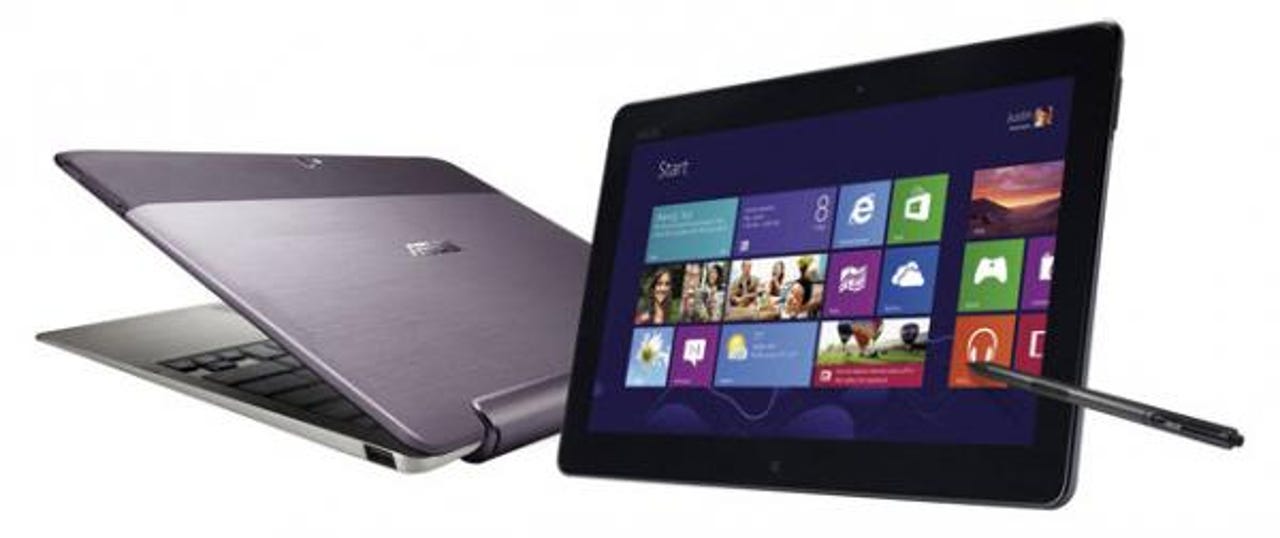How to choose a Windows 8 tablet that is right for you


We have already seen a good assortment of Windows 8 tablets, hybrids, and convertible notebooks about to become available. Many plan on picking one up if the price is right to fill the role of both notebook and tablet. Getting the proper device that will meet the needs of the individual is crucial, so some thought should go into choosing the right device.
I am one of the rare individuals who has been using tablets for almost a decade. I used them in my full-time job for years, and that experience makes it clear that if Windows 8 tablet buyers don't approach the purchase decision properly there's little chance of happiness with the purchase.
The thought process I am covering is not about Windows 8 and its ability to meet each buyer's needs. This article assumes Windows 8 will meet those needs just fine. I am instead referring to analyzing how such a tablet will be used, and choosing the right hardware to fit that use.
The first part of the tablet purchase process should be to determine which form of device will be best. There will be slates that can be used alone or connected to portable keyboards. These hybrids, like the Microsoft Surface, are tablets first and laptop replacements second. This type of device will better serve users planning on primarily using the tablet by itself, with only occasional use of the attachable keyboard.
My determination that any slate weighing more than 1.5 lbs. is not suitable for extended use in the hands can't be stated forcefully enough. If you expect to mostly use a hybrid as a tablet without the keyboard, avoid the larger tablets.
I know from hundreds of hours of tablet usage that any tablet weighing more than 1.5 lbs. is extremely uncomfortable when used in the hand for long periods. The only device type that makes this possible is the hybrid like the Surface where the display (tablet) an be totally removed from the keyboard. Any type of keyboard that is attached to the slate will render the tablet too uncomfortable for use in the hands for more than a few minutes at a time.
The convertible notebook form, that of an Ultrabook with a rotating screen that flips back over the keyboard, can be used as a tablet but is really for those planning on using it as a notebook most of the time. Those expecting to primarily use the tablet without the keyboard should avoid the convertible like the plague.
Package weights of three pounds will not be suitable for comfortable tablet use. Even the thin convertibles already being shown are simply too bulky and heavy for comfortable use in the hands. They will be OK for very infrequent tablet use but not much more. They are notebooks first and tablets second, a distant second at that.
Once you decide whether you will use your new Windows 8 portable primarily as a tablet or a notebook, you then need to think about screen size. We are already seeing Windows 8 tablets ranging from 10 inches to 13 inches. It may seem that the bigger the screen the better, but that is only true for those expecting to use the device mostly as a notebook.
Screen size directly affects the size and weight of the tablet plus keyboard, and that gets back to the comfort of use in the hands. While a 13-inch tablet, even one detachable from the keyboard, sounds like a nice advantage over smaller models, this will directly determine the weight of the slate.
My determination that any slate weighing more than 1.5 lbs. is not suitable for extended use in the hands can't be stated forcefully enough. If you expect to mostly use a hybrid as a tablet without the keyboard, avoid the larger tablets. They will not be pleasing for such use. This is the one time when smaller is definitely better. Get a 10 or 11-inch slate and you will end up much happier with the purchase.
If you've already determined you will be getting a convertible with a keyboard permanently attached, it's because you will use it as a notebook first and tablet occasionally. This is when the larger display is appropriate, so go with the biggest you can afford. All of these convertibles will be highly portable, so go with the bigger screen. It will be heavier when used as a tablet but you don't plan on doing that much.
All of this may seem only logical, but in my experience people tend to underestimate how negatively the wrong decisions can affect the enjoyment of the purchase. A tablet used in the hand a lot must be as light as possible or the happiness with the purchase quickly turns sour. The same can be said with going with a convertible for use as a notebook that has too small a display. The size of the display determines the size of the keyboard so going too small has a double whammy.
The new tablets and convertibles with Windows 8 will change computing going forward. Getting the right tool for the job is vital to making a smart purchase, and being happy with it.
Related stories:
- Can the father of C# save us from the tyranny of JavaScript?
- With a month to go until Windows 8's launch, 2,000-plus Windows store apps
- Google and Windows 8, working together
- Did Microsoft pull the trigger on Windows 8 too early?
- Microsoft confirms October 25 launch for Windows 8
- Windows 8 tablets: Vindication for the 'tablets do real work' crowd